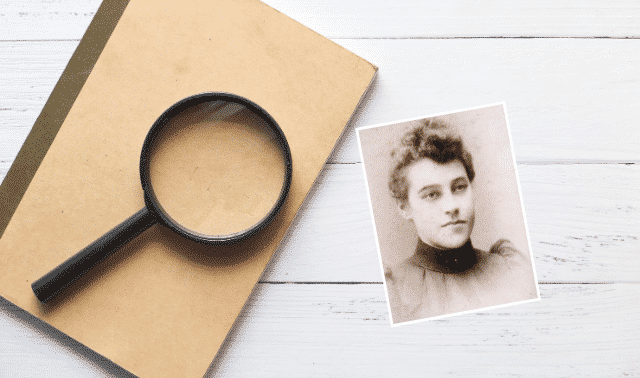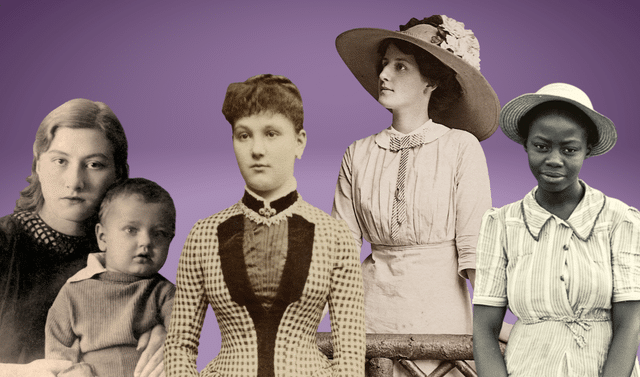
Question time: How many of your brick walls and genealogy search challenges involve female ancestors and your maternal lines? Even finding our male ancestors hinges upon knowing the maiden names of their daughters when there are few records of her, and none that contain her maiden name. Finding your women ancestors can be quite the challenge, but when you succeed in finding those elusive records, the payoff is worth the work.
Why can it be so difficult to trace women in genealogical records? Prior to the 20th century, most historical records were for and about men. Property was usually listed under the man’s name, and men ran businesses and the government. Meanwhile, a woman typically changed her name each time she married, and children carried men’s surnames to the next generation. If finding the females in your family tree has you singing the blues, get back in sync with these seven research strategies.
1. Know Your Names
You expect to find women recorded under different surnames when they marry, but they might’ve used variations of their first names, too. Write the full names, maiden and married, of the women you’re seeking. Add nicknames and variations for their first names, such as Mary, Maria, Mamie or Mattie; Betty or Liz for Elizabeth; Sally for Sarah.
Note the names of each woman’s husband, children and siblings-and especially any unusual middle names, which could be the mothers’ or grandmothers’ maiden names (such as Evelyn Vallis Neville). Naming traditions may hold clues, too. Some cultures name the first daughter after her mother’s mother, the second daughter after her father’s mother, and the third daughter after her mother.
2. Make a Timeline
A timeline puts your ancestor in historical perspective and points you to genealogical records. Begin the timeline with the woman’s birth and end with her death. Between, write everything you know about her, including her marriage date and children’s birth dates and places. Add events, such as migrations and hospitalizations, as you uncover them. Include significant national occurrences, such as wars and epidemics, and local events you glean from county histories.

It might also be worthwhile to note important governmental laws and acts passed during your ancestor’s lifetime (our Women’s Naturalization Timeline is one example). Websites such as OurTimelines.com and our Women’s History Timeline will help, too.
3. Ask Around
Women are often the “communicators” in families, so talk to your older female relatives and schedule a visit to talk about your family. Ask each woman about her mother’s maiden name, how she met her husband, what motherhood was like and favorite family recipes.
Missed your chance? Interview your ancestor’s children, grandchildren, other relatives, friends and neighbors. Pay special attention to names, dates, places and unusual occurrences that could point your research in a particular direction.
4. Explore Records
Since there’s no magical record set that focuses specifically on women, researching them in genealogical documents is more about strategy than anything else. See our of searching techniques for women.
To determine which records to look for, examine your female ancestors’ timelines and note events that may have generated records. Weddings mean marriage records; children may have birth and baptismal certificates; migrations could lead to land records.
Note social or religious groups, or fraternal benefit societies a woman might’ve belonged to through her church or community. Contact the main office to ask about historical records. If the organization no longer exists, a historical society or library archive may have its files.
You’ll find more places to look for records in Christine Kassabian Schaefer’s book, The Hidden Half of the Family: A Sourcebook for Women’s Genealogy (Genealogical Publishing Co.). It contains a state-by-state resource guide with important dates, laws governing your female ancestors’ lives, and advice for finding records they left.
5. Investigate Her Associates
Look for your female ancestor in records of her husband, father, brothers and other men she’s associated with. Widen your search to neighbors, friends and other relatives outside her immediate family. She may show up as a household member, godparent, heir or in-law. In particular, witnesses named in marriage licenses, naturalization papers and baptismal records may be related.
6. Search Databases with a Keen Eye
When searching genealogy database sites such as FamilySearch, the subscription site Ancestry.com (a version called Ancestry Library Edition is free at many public libraries) and HeritageQuest Online (also free through many libraries) look for both maiden and married names. Women in some cultures used their maiden names on official records. A woman also might appear under an initial or nickname, and not necessarily the same nickname in every record. Look at other details in the record, such as age, birthplace and husband’s name, to help you determine whether she’s your ancestor. As with any name search, try alternate name spellings and different combinations of search parameters.
Pay attention to surname patterns: For Slovaks or other Eastern Europeans, try adding the suffix -ova, often part of daughters’ surnames. For Scandinavians, try -datter. If a woman has an unusual first name such as Geraldine or Verona, search on just the first name and a location or year if the site permits it.
If you can’t find your female ancestor in a census or immigration database, search for her children. Look for people who appear with her in other records—they might be relatives or friends she traveled with and settled near, and her name could be on the next line.
7. Read Her Diaries and Letters
Men’s deeds are most often recorded in history books. But women may have “spoken” their thoughts in a diary and in letters to distant relatives and soldier sons. They can provide both genealogical details and insight into female ancestors’ lives.
Journals and correspondence of other community members also may mention your ancestor. Search for them in the local library, historical society or museum. You’ll find memoirs—perhaps even a relative’s—catalogued in Laura Arksey’s American Diaries: An Annotated Bibliography of Published American Diaries and Journals from 1845 to 1980 (Gale Group, out of print).
Writings of unrelated ordinary and famous women, in the absence of records on your own ancestor, will help you tap into her daily life. If your aunt, for example, was a WWII “Rosie” or planted a Victory Garden, learn what her life may have been like from the transcribed essays at What Did You Do in the War Grandma?
Related Reads
A version of this article appeared in the January 2008 issue of Family Tree Magazine.








